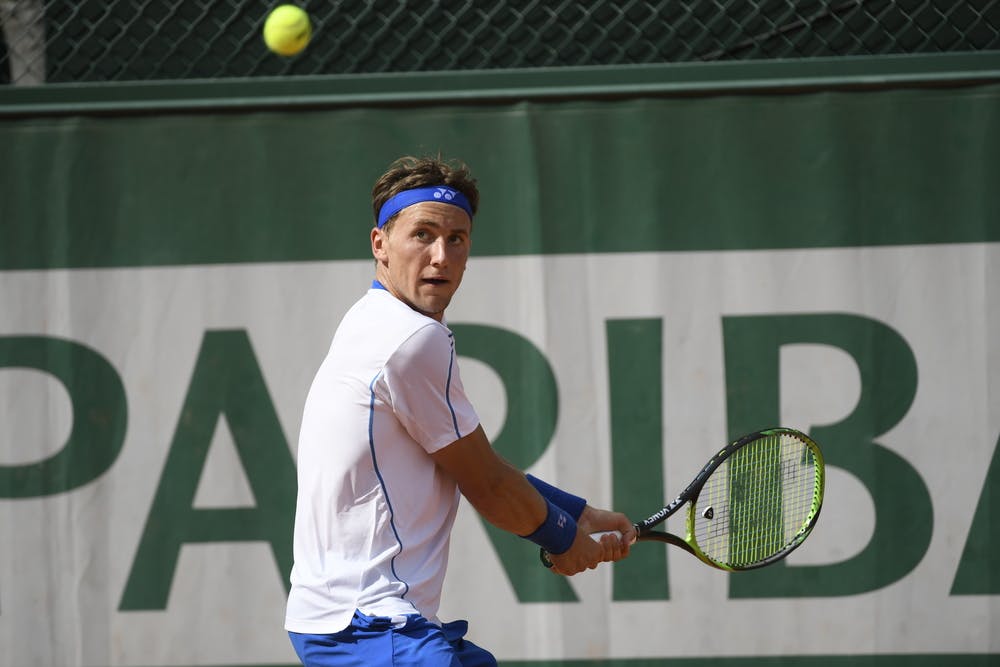Known for his forehand as much as for his work ethic, he reached the final at the US Clay Court Championships in Houston last month and came through qualifying to make the last 16 in Rome. He trains at the Rafa Nadal Academy, which sometimes provides him the opportunity to practice with the King of Clay himself.
Roland-Garros 2019 is his first Grand Slam where he is in the main draw by right. His first-round opponent is the 2014 semi-finalist here Ernests Gulbis.
Ruud is a useful golfer, even listing a set of clubs among the items he would take to a desert island. “Maybe I should have chosen that,” he smiles. “I wouldn’t have to run as much as I do on a tennis court.”
Radu Albot, Moldova
When Albot was born in November 1989, Moldova was still part of the Soviet Union. With the dissolution of the USSR two years later, Moldova became independent. Albot began playing on a local wooden indoor court at age 6.
Now 29, he has been on the Tour for a decade and in 2015 became the first Moldovan man or woman to pierce the top 100. By emerging top of the heap in Delray Beach this year, he notched another first as the only Moldovan ever to win an ATP title.
He arrives at Roland-Garros on a further high, in the knowledge that reaching the semi-finals on Geneva’s clay this week will see him break into the top 40 come Monday.
Nicknamed “Machine” by other players, his most heartfelt ambition is to create a national tennis legacy. “I don’t want to finish my career and see that tennis is dead in my country,” he told the New York Times. “I want to walk into every tournament and see the Moldovan flag flying.”
Hugo Dellien, Bolivia
Last July, Dellien became the first man from his nation to crack the top 100 in 34 years, and only the second of all time (after Mario Martinez).
In a country where sporting icons are thin on the ground, 25-year-old Dellien – nicknamed “Pantera” (panther) – racked up a clutch of Challenger titles in 2018, and spoke of his thrill at playing the qualifiers at Roland-Garros, even though he did not win through.
 ROLAND-GARROS
19 May - 8 June 2025
ROLAND-GARROS
19 May - 8 June 2025


 © Cedric Lecocq / FFT
© Cedric Lecocq / FFT ©Philippe Montigny / FFT
©Philippe Montigny / FFT ©Antoine Couvercelle / FFT
©Antoine Couvercelle / FFT ©Nicolas Gouhier / FFT
©Nicolas Gouhier / FFT